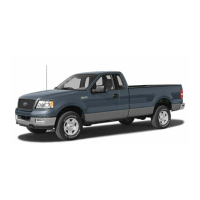
Do you have a question about the Ford 2004 F150 and is the answer not in the manual?
| Brand | Ford |
|---|---|
| Model | 2004 F150 |
| Category | Automobile |
| Language | English |
Explanation of warning lights and chimes found in the instrument cluster.
Information on the brake system warning light and its function.
Information on the ABS light and what to do if it stays illuminated.
Explanation of the air bag readiness light and its malfunction indicators.
Specifications and trade numbers for replacement exterior bulbs.
Step-by-step instructions for replacing headlamp bulbs.
Operation of power windows and safety warnings.
Operation and setting of the speed control system.
Step-by-step guide to setting the speed control.
Controls for audio and climate features on the steering wheel.
System for replacing hand-held transmitters with a built-in device.
Instructions for programming HomeLink buttons.
Displays important vehicle information and system warnings.
Procedure to adjust compass zone and calibrate the compass.
Alerts for potential problems or malfunctions in operating systems.
Procedure to unlock driver's door and all doors.
Procedure to lock all doors and confirm lock status.
Remote entry system controls for memory seat and pedals.
Steps to program memory seat and pedal positions.
Procedure to program up to six remote transmitters.
Functions of the keyless entry keypad.
Steps to create a personal entry code for the keypad.
How to unlock/lock doors using the keyless entry keypad.
Engine immobilization system to prevent starting without coded key.
Procedure to program up to eight coded keys.
System for automatic positioning of driver seat and pedals.
Overview of the Personal Safety System and its components.
Description of system designed to protect occupants in frontal crashes.
Capabilities of dual-stage air bags and their energy levels.
Sensor that detects impact severity to modify air bag deployment.
Tailors driver air bag deployment based on seat position.
System that turns off passenger air bag for child seats or empty seats.
Crucial safety advice regarding air bags and children.
Sensors that detect if safety belts are fastened.
Designed to tighten safety belts firmly during a collision.
Allows deactivation of passenger side airbag.
How to check if the Personal Safety System is working.
General safety advice for using safety restraints.
Instructions for fastening lap and shoulder belts.
Vehicles equipped with safety belt buckle pretensioners.
Sensors that detect if safety belts are fastened.
Using LATCH anchors for child seat installation.
Explanation of OFF/LOCK, ACCESSORY, ON, and START positions.
Precautions to avoid the dangerous effects of carbon monoxide.
Procedure for starting the engine.
Information on normal brake noise and system warnings.
Explanation of the ABS system and normal characteristics.
How to use ABS during hard braking.
Meaning of the ABS warning lamp.
How to set and release the parking brake.
Information on automatic transmission operation.
Prevents gearshift from moving out of Park without brake depressed.
Prevents gearshift from moving out of Park unless brake is depressed.
Explanation of gearshift positions and cold weather operation.
Warns driver of obstacles near rear bumper.
Information on safe operation of 4WD vehicles.
Operation of 2H, 4H, 4L, and N modes.
How to safely return to pavement after going off-road.
Advice on emergency maneuvers and driving.
Requirements for replacing tires and wheels.
Guide to proper loading of vehicle and trailer.
How to calculate vehicle load and towing capacity.
Information on towing capacity and trailer classes.
Using proper equipment and ensuring proper attachment for towing.
Specific advice for driving with a trailer attached.
Guidelines for towing vehicle with all four wheels on the ground.
Recommendations for F-150 used for snow removal.
Weight limits and guidelines for snowplow installation.
Recommendations for operating vehicle with snowplow attached.
Safety advice for plowing with air bag equipped vehicles.
Transmission and transfer case operation during plowing.
Managing engine temperature when plowing.
Ford's complimentary roadside assistance program details.
List of services covered by roadside assistance.
How to use roadside assistance identification card and contact numbers.
Device that stops fuel pump after a substantial jolt.
Information on fuses, their ratings, and locations.
How to identify and replace blown fuses.
Location and access to the passenger compartment fuse panel.
Coding of fuses and their panel descriptions.
Procedure for changing a flat tire.
Procedure to help prevent vehicle movement during tire change.
Safety precautions and procedure for jump-starting a vehicle.
Step-by-step instructions for connecting jumper cables.
Procedure for removing jumper cables in reverse order.
How to report vehicle safety defects to NHTSA and Ford.
Safety precautions to follow when servicing the vehicle.
Information on checking and adding engine oil.
Procedure for checking the engine oil level.
Instructions for adding engine oil.
Recommendations for engine oil and filter types.
Checking and maintaining engine coolant levels and concentration.
Procedure for checking engine coolant.
Important safety precautions when handling automotive fuels.
Recommendations for fuel type and octane rating.
Measuring techniques and driving style for better fuel economy.
Methods for calculating fuel economy.
Ensuring proper function of emission control components.
Monitors engine's emission control system.
Procedure for checking and adding power steering fluid.
Checking and adding automatic transmission fluid.
Procedure for checking transmission fluid level.
Instructions for changing air filter element for 4.6L and 5.4L engines.
Inspecting tire tread for wear and damage.
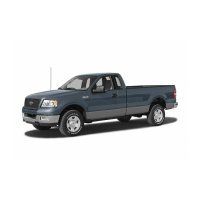
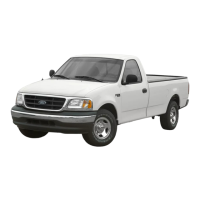
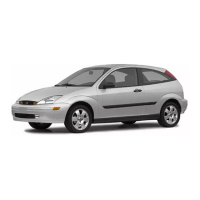
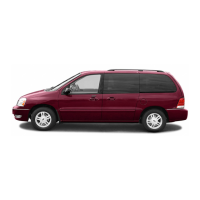
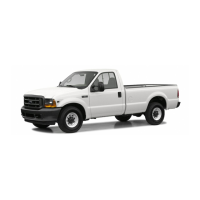
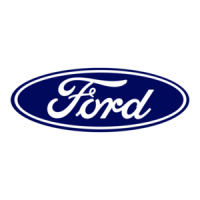


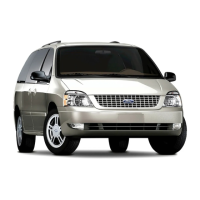
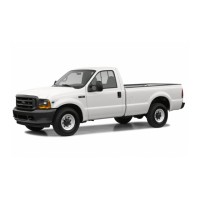

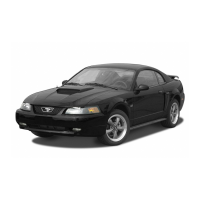
